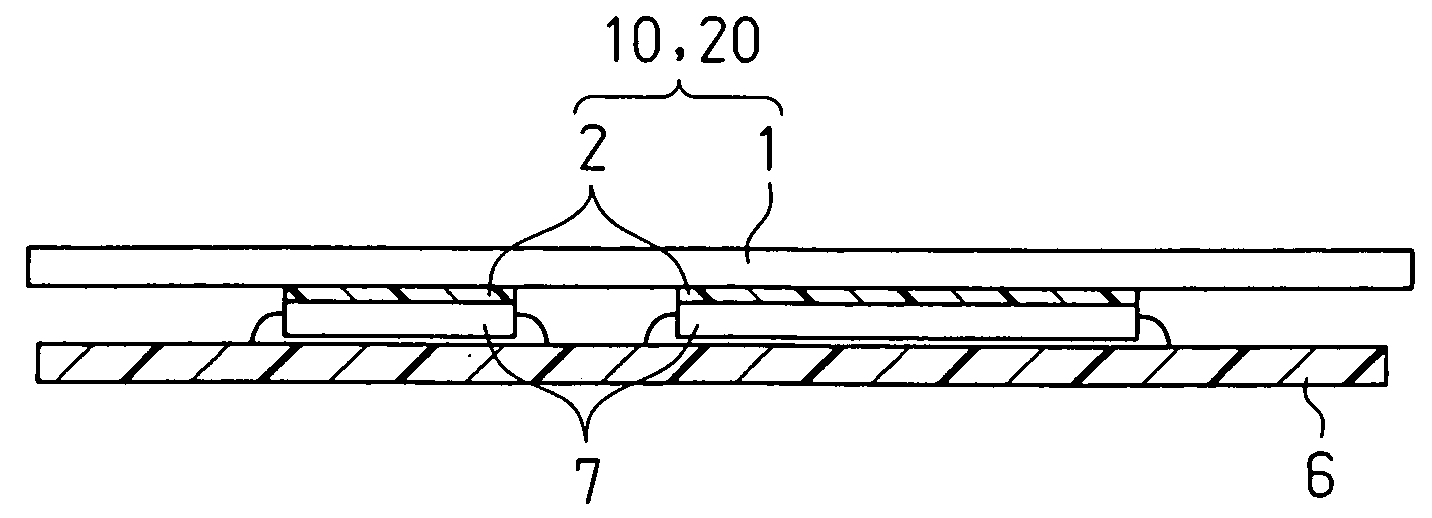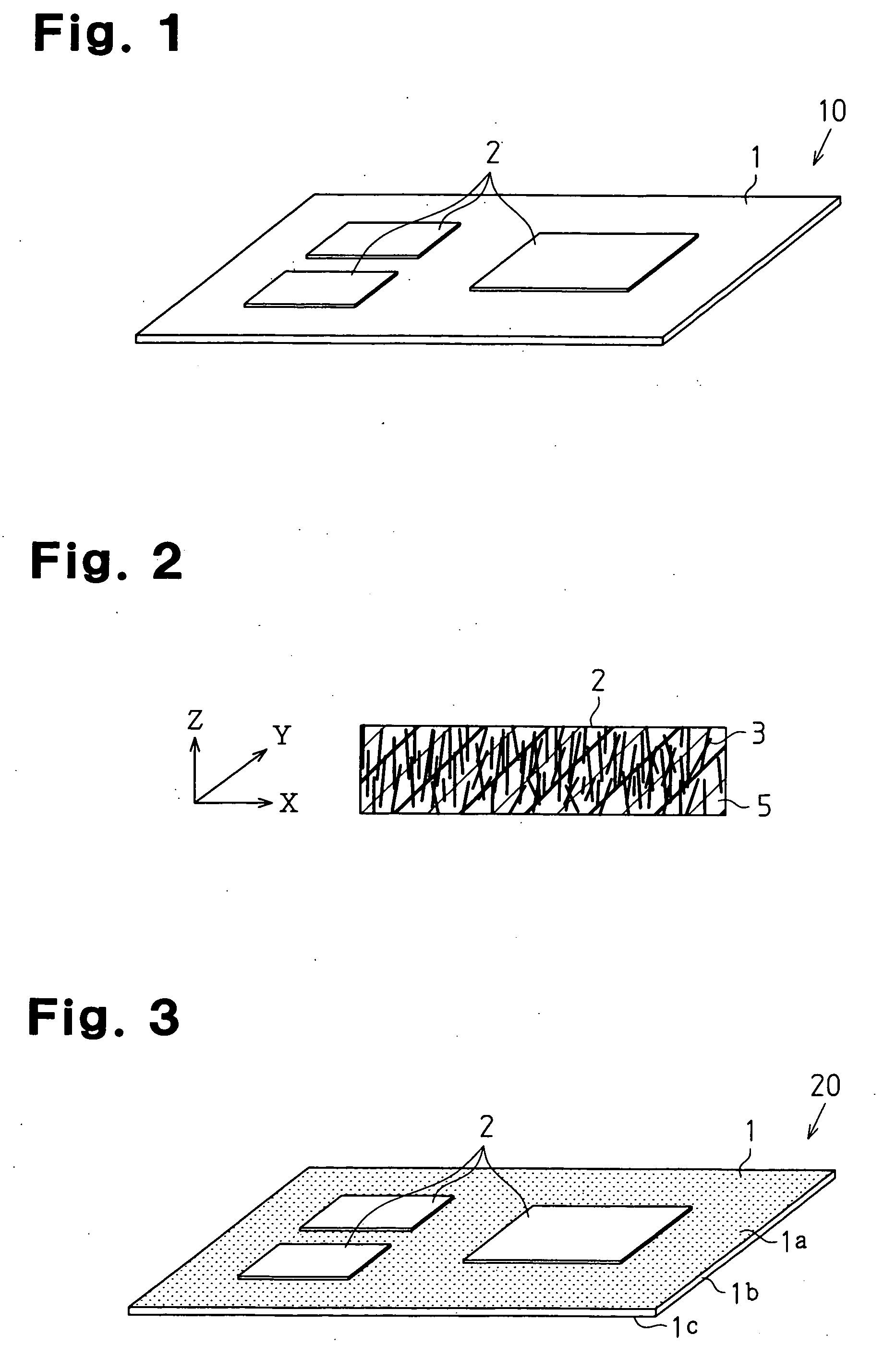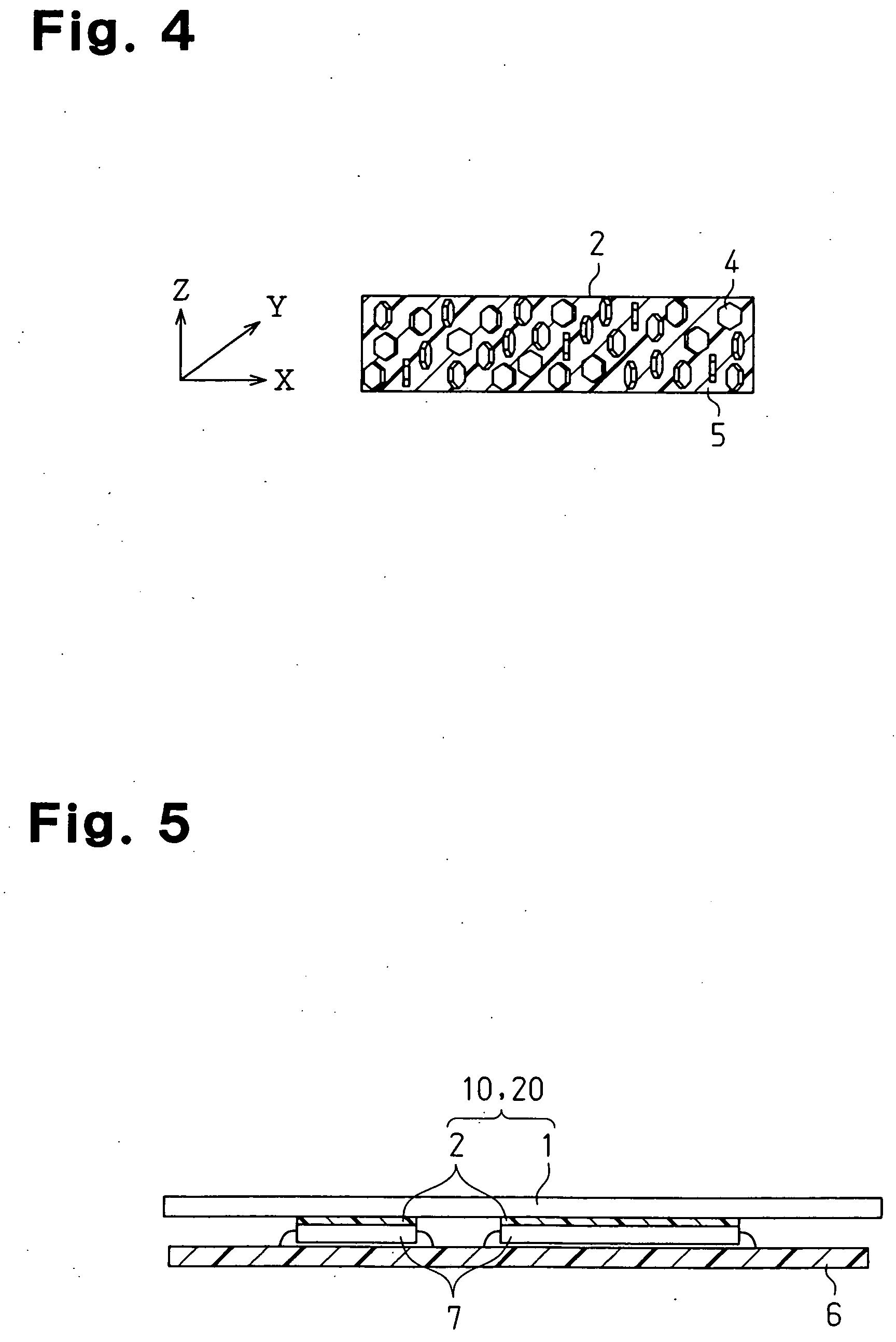Heat radiation member and production method for the same
a radiation member and heat radiation technology, applied in the direction of cooling/ventilation/heating modification, semiconductor/solid-state device details, semiconductor devices, etc., can solve the problem of poor conformity of metal sheets, inability to achieve the expected effect of excellent thermal conduction properties of sheets, and inability to direct contact with exothermic parts with satisfactory adhesion, etc. problem, to achieve the effect of effective transmission and diffusion of hea
- Summary
- Abstract
- Description
- Claims
- Application Information
AI Technical Summary
Benefits of technology
Problems solved by technology
Method used
Image
Examples
first embodiment
[0019] A heat radiation member according to a first embodiment of the present invention will be described with reference to the accompanying drawings. FIG. 1 shows a perspective view of a heat radiation member 10 according to the first embodiment. The heat radiation member 10 includes a thermal diffusion sheet 1 and thermally conductive polymer layers 2 formed on parts of a top surface of the thermal diffusion sheet 1. Preferably, the thermally conductive polymer layers 2 are selectively formed on the thermal diffusion sheet 1 at positions corresponding to exothermic parts which generate heat when in use. In this embodiment, the thermal diffusion sheet 1 is preferably a graphite sheet.
[0020]FIG. 2 shows a sectional view of the thermally conductive polymer layer 2. The thermally conductive polymer layer 2 contains a polymer material 5 as a matrix and carbon fibers 3 as a thermally conductive filler. In the thermally conductive polymer layer 2, the carbon fibers 3 are oriented in suc...
second embodiment
[0025] A heat radiation member according to a second embodiment of the present invention will be described with reference to FIGS. 3 to 5. The heat radiation member 20 shown in FIG. 3 includes the thermal diffusion sheet 1 and the thermally conductive polymer layers 2 formed on the thermal diffusion sheet 1. Preferably, the thermally conductive polymer layers 2 are selectively formed on the thermal diffusion sheet 1 at least at positions corresponding to exothermic parts that generate heat when in use. In this embodiment, the thermal diffusion sheet 1 is preferably a composite sheet consisting of a graphite sheet 1b and aluminum foils 1a and 1c formed on the entire both sides of the graphite sheet 1b. FIG. 4 shows a sectional view of the thermally conductive polymer layer 2. In this embodiment, the thermally conductive polymer layer 2 includes the polymer material 5 as a matrix and hexagonal boron nitride powders 4, which is in the form of scales, as a thermally conductive filler. I...
example 1
[0058] Firstly, 70 parts by weight of graphitized carbon fibers (produced by Nippon Graphite Fiber Corporation, average fiber diameter: 9 μm, average fiber length: 100 μm) and 150 parts by weight of aluminum oxide powders (produced by Showa Denko K.K., in spherical shape, average particle size: 3.5 μm) as thermally conductive fillers were mixed with 100 parts by weight of liquid silicone rubber (produced by GE Toshiba Silicone Co., Ltd.) as a polymer material 5. The resultant mixture was vacuum defoamed to prepare a thermally conductive polymer composition. Subsequently, this thermally conductive polymer composition was injected into a cavity of a mold having a shape corresponding to a predetermined sheet. A magnetic field (magnetic flux density of 10 tesla) was applied in such a manner that the lines of magnetic force corresponded to the thickness direction of the thermally conductive polymer composition in the cavity. Thereby, the graphitized carbon fibers in the thermally conduct...
PUM
 Login to View More
Login to View More Abstract
Description
Claims
Application Information
 Login to View More
Login to View More - Generate Ideas
- Intellectual Property
- Life Sciences
- Materials
- Tech Scout
- Unparalleled Data Quality
- Higher Quality Content
- 60% Fewer Hallucinations
Browse by: Latest US Patents, China's latest patents, Technical Efficacy Thesaurus, Application Domain, Technology Topic, Popular Technical Reports.
© 2025 PatSnap. All rights reserved.Legal|Privacy policy|Modern Slavery Act Transparency Statement|Sitemap|About US| Contact US: help@patsnap.com



